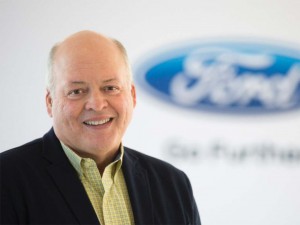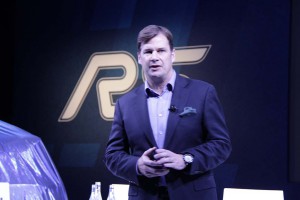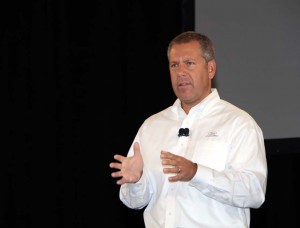
Prior to joining Ford, Jim Hackett was Steelcase CEO and served as Interim U-Michigan Athletic Director.
Scrambling to turn around declining sales and earnings and to address broad shareholder concerns, Ford Motor Co. says it will replace CEO Mark Fields while reassigning a number of other senior managers.
The decision to oust the 56-year-old Fields, architect of a broad push into new mobility services, and replace him with former Steelcase CEO Jim Hackett comes just a week after Ford announced plans to eliminate 1,400 salaried jobs in North America and Asia, part of a broader $3 billion cost cutting program.
Ford Chairman Bill Ford Jr. downplayed any sense of management turmoil in a statement confirming the news reports that had begun to appear late Sunday night, declaring, “We’re moving from a position of strength to transform Ford for the future.”
(Ford CEO Fields out. Click Here for the initial story.)
But, if anything, the automaker appears to have lost the confidence of its investors – and, in turn, Fields appears to have lost the confidence of Chairman Ford and the company’s board of directors – because of the plans that have been put in motion over the last several years. Fields was fond of explaining his goal was to transform the nation’s second-largest automaker into a “mobility company,” rather than just a car manufacturer,” by pushing into connected car technology, ride and car-sharing and autonomous and driverless vehicles.
Where Ford moves now is uncertain, though analysts noted that the 62-year-old Hackett, the carmaker’s new chief executive, has been chairman of Ford Smart Mobility LLC since 2016. That operation was focused on implementing many of the changes Fields had put into play.
The appointment of Hackett, who also put in a 16-month stint as the Interim Athletic Director at the University of Michigan, is just one of the changes in Ford’s senior management. Others include:
- Jim Farley, currently head of operations in Europe, the Middle East, Africa and Asia Pacific, will become executive vice president and president of Global Markets. In that role, the 54-year-old Farley – a former Toyota executive – will take on a broad portfolio overseeing operations in most of the world for Ford, in general, and for the Lincoln brand, in particular;
- Joe Hinrichs, who now serves as President of the Americas, will become executive vice president and president of Global Operations. That will have the 50-year-old Ford veteran managing product development, manufacturing and labor relations, quality, purchasing, safety and various environmental efforts;
- Marcy Klevorn, currently Ford’s Chief Information Officer, has been named executive vice president and president of Mobility, The 57-year-old Klevorn will now oversee Ford Smart Mobility. She will continue to lead information technology operations and run Global Data, Insight and Analytics.
Praising the three executives, Chairman Bill Ford said each “has a track record of driving innovation, cost-efficiency and delivering results around the world.”
(Ford to cut 1,400 jobs as part of major cost-cutting push. For the story, Click Here.)
Another senior-level change sees the retirement of Ford veteran Ray Day, who will step down as the carmaker’s head of public relations. He will be replaced by one-time journalist Mark Truby, who had been heading media operations in Europe and other markets outside the Americas.
Industry observers say they wouldn’t be surprised to see other changes put in motion, with the spotlight on executives including current global product development and technology chief Raj Nair, as well as Ford’s sales, service and marketing director Mark LaNeve.
How much change to Ford’s broad strategy the new appointments will bring is far from certain, but Ford and Hackett, in a prepared statement, noted three key goals:
- “Sharpening operational execution, to address issues like quality and product launches, but also for “decisively addressing underperforming parts of the business”;
- “Modernizing Ford’s business,” with technologies like 3D printing, advanced robotics and artificial intelligence, “to unleash innovation, speed decision-making and improve efficiency”; and
- “Transforming the company to meet future challenges”, something that suggests many of the key areas ousted CEO Fields had focused on will remain company priorities.
(Weak share price slammed by Ford investors at annual meeting. Click Here for the story.)



I think the whole Auto industry is in trouble work for them my co-workers are constantly worried about it, the media needs to tell it like it is not worry what others will think of them the Detroit Bureau
is very credible we read it always.
If this “mobility implementation” works while raising stock price and valuation, Hinrichs will replace Hackett in 3 years. I would not count on LaNeve being around.